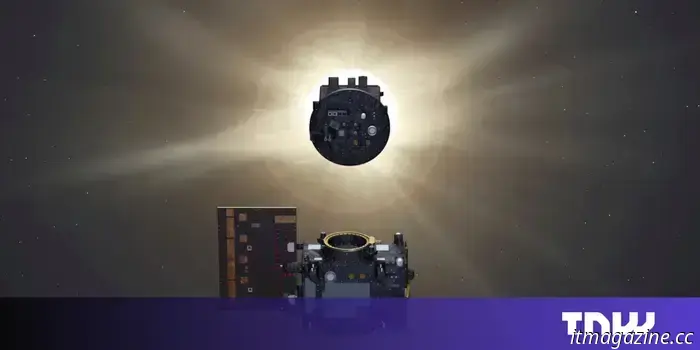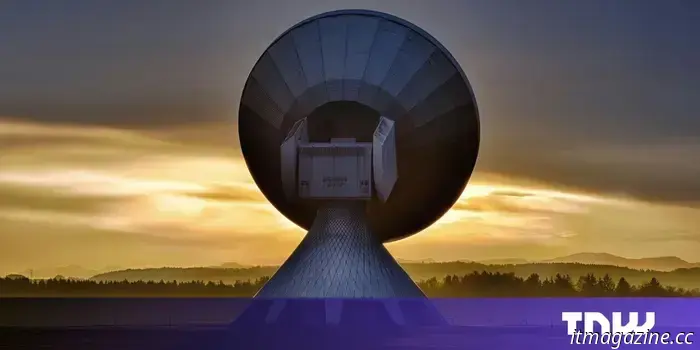
The most detailed observations of the Sun's south pole could reveal its secrets.
A spacecraft designed by European scientists and companies has obtained new and groundbreaking views of the Sun’s south pole.
Constructed by Airbus in the UK, the Solar Orbiter was created as part of a collaboration between the European Space Agency (ESA) and NASA. The probe was launched in 2020 from Cape Canaveral, Florida, using a United Launch Alliance Atlas V 411 rocket.
Several European technology firms contributed to this mission. Among them is Enbio, based in Dublin, which engineered a protective coating for the probe utilizing crushed animal bones. This unique material is among the most unusual ever sent into space and is essential for protecting the Solar Orbiter from the Sun’s extreme heat and radiation. The spacecraft is set to fly closer to the Sun than any previous probe, which is crucial for a better understanding of our closest star.
Prior to Solar Orbiter, all photographs of the Sun were taken from the ecliptic plane, the flat orbit through which Earth and its satellites travel. This limited the ability to directly observe the solar poles.
By tilting its orbit out of the ecliptic plane, Solar Orbiter gained a fresh perspective at previously unseen angles of our closest star. The probe executed multiple flybys of Venus and Earth, using their gravitational pull to gather the necessary momentum to establish a completely new orbit around the Sun.
In March, Solar Orbiter achieved a viewing angle of 17° below the solar equator. From this position, the probe captured several images employing a range of scientific instruments that monitor the Sun in visible, ultraviolet, and extreme ultraviolet light. The aggregated data provides a multi-faceted glimpse into one of the least explored areas of our nearest star.
Solar Orbiter’s various instruments deliver multiple insights into the Sun’s fiery atmosphere. The remarkable views could enhance scientists’ understanding of the Sun’s magnetic field and its solar cycle. They may also illuminate the origins of solar storms, the energetic eruptions that can interfere with satellites, power grids, and communications on Earth.
Professor Carole Mundell, ESA’s science director, remarked that the mission signifies a “new era” in solar science. “The Sun is our nearest star, the giver of life, and a potential disruptor of contemporary space and ground power systems. Thus, it is vital that we comprehend its workings and learn to predict its behavior,” she stated.
In a chaotic state, Solar Orbiter’s recent data highlights the Sun’s magnetic south pole, displaying a blend of north and south magnetic fields rather than a single dominant field, akin to that of Earth. This is typical of the Sun’s 11-year activity cycle when its magnetic field reverses.
The spacecraft also tracked the movement of solar particles above the south pole, revealing swirling flows of hot plasma that hint at the existence of polar vortices in the Sun’s atmosphere. These intricate dynamics, not visible from Earth or typical orbits, could provide new insights into the operation of the Sun’s magnetic field and the solar wind it generates.
Enbio is not the only technology firm responsible for the recent achievements of Solar Orbiter. Portugal’s Active Space Technologies developed precision feedthroughs that enable UV light to access the spacecraft’s instruments without exposing them to extreme heat. Another Portuguese company, Critical Software, supplied the probe's diagnostics and onboard software, while Irish startup Captec handled the software verification and validation for the probe’s flight software.
All these technological innovations have allowed for unparalleled views of the Sun — and even more discoveries may be forthcoming. In the upcoming years, Solar Orbiter will tilt further away from the ecliptic, ultimately reaching 33° above the solar equator, providing a new perspective on the Sun’s fiery characteristics.
Former NASA rocket scientist Aisha Bowe, who participated in Blue Origin’s landmark (and controversial) all-female spaceflight, will discuss the EU’s space ambitions at the TNW Conference. The event is set for June 19-20 in Amsterdam. Tickets are available now — use the code TNWXMEDIA2025 at checkout to receive a 30% discount.

Other articles
 The drive for AI warfare has positioned Helsing as one of the top five most valuable tech companies in Europe.
The Munich-based defense technology startup Helsing has secured €600 million in funding as rising geopolitical tensions lead to increased investment in AI-driven warfare.
The drive for AI warfare has positioned Helsing as one of the top five most valuable tech companies in Europe.
The Munich-based defense technology startup Helsing has secured €600 million in funding as rising geopolitical tensions lead to increased investment in AI-driven warfare.
 Engineered artificial solar eclipse in Europe provides fresh perspective on the Sun.
Two satellites have successfully created an artificial solar eclipse, allowing scientists to gain new insights into the Sun's outer atmosphere.
Engineered artificial solar eclipse in Europe provides fresh perspective on the Sun.
Two satellites have successfully created an artificial solar eclipse, allowing scientists to gain new insights into the Sun's outer atmosphere.
 7 TNW Conference sessions we’re looking forward to
The TNW Conference unites Europe’s brightest thinkers, most daring startups, and revolutionary technology in Amsterdam on June 19 and 20.
7 TNW Conference sessions we’re looking forward to
The TNW Conference unites Europe’s brightest thinkers, most daring startups, and revolutionary technology in Amsterdam on June 19 and 20.
 Huawei's chairman Xu Zhijun emphasizes the need for new growth catalysts in the telecommunications sector at MWC Shanghai 2025.
During the keynote session at MWC Shanghai 2025 on Wednesday, titled The Techco Transformation: Pioneering the Next Era of Innovation, Huawei's rotating chairman Xu Zhijun gave a speech that focused on the significant growth challenges confronting the global telecom sector.
Huawei's chairman Xu Zhijun emphasizes the need for new growth catalysts in the telecommunications sector at MWC Shanghai 2025.
During the keynote session at MWC Shanghai 2025 on Wednesday, titled The Techco Transformation: Pioneering the Next Era of Innovation, Huawei's rotating chairman Xu Zhijun gave a speech that focused on the significant growth challenges confronting the global telecom sector.
 Opinion: Space startups are shifting their focus to defense. This is beneficial for innovation.
Space startups are transitioning towards defense, which is driving a fresh surge of advancements in deep tech, including optical communications and Earth observation.
Opinion: Space startups are shifting their focus to defense. This is beneficial for innovation.
Space startups are transitioning towards defense, which is driving a fresh surge of advancements in deep tech, including optical communications and Earth observation.
 European venture capitalists have placed a historic investment on this lesser-known fusion energy contender.
Only two years after coming out of stealth mode, German startup Proxima Fusion has secured Europe's largest private investment in fusion energy to date.
European venture capitalists have placed a historic investment on this lesser-known fusion energy contender.
Only two years after coming out of stealth mode, German startup Proxima Fusion has secured Europe's largest private investment in fusion energy to date.
The most detailed observations of the Sun's south pole could reveal its secrets.
A spacecraft created by European scientists and companies has obtained unprecedented new observations of the Sun’s southern pole.
